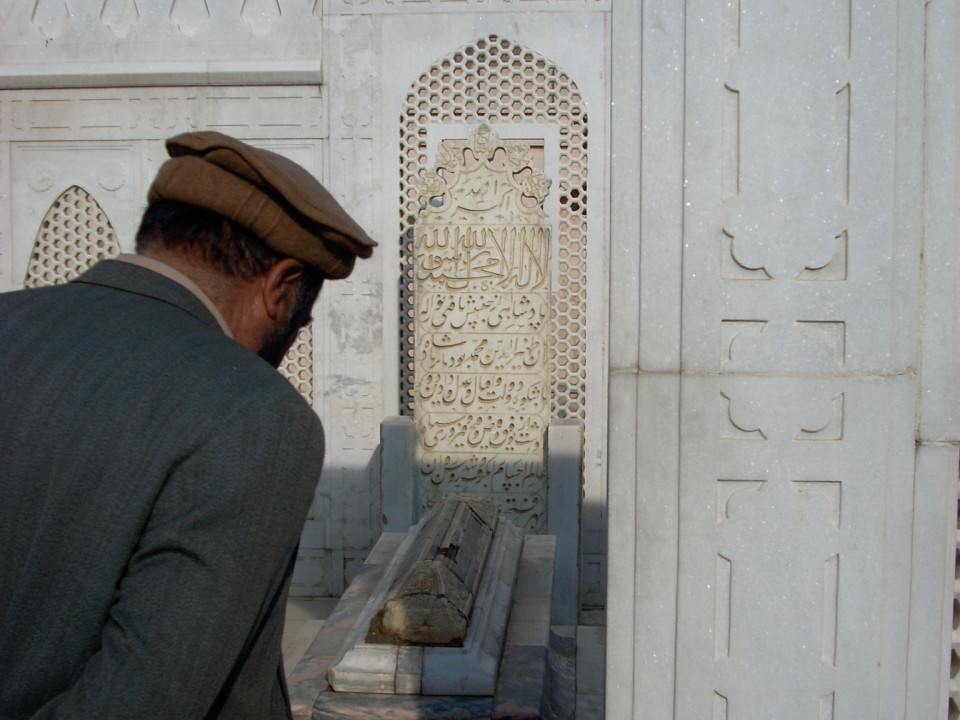Through the Eyes of an American Teacher

Last week I was granted the rare privilege of learning a little about what it means to be a classroom teacher in America today. An alert had been sent around my friend's school about a possible threat from a student. As she reacted to the information from the school, describing her own actions, plans and feelings I became aware that I could also see the streets of Kabul, Sudan and Kosovo in the background.
My friend was speaking my language. From a classroom in America. All the way to the stressful context of Afghanistan. The threat assessments were similar, the organisational response echoed humanitarian agency strategies, and her individual reactions and planning matched those working in high stress contexts.
For individuals in these environments the core objectives are the same;
How do I remain safe, (and complete my mission)?
How do I continue to thrive, (and complete my mission)?
Aid workers have been figuring this out for the last 20 years or so, but it seems to me that the education sector in developed countries is new to this. Maybe there is something the aid sector can share with teachers and schools to enhance safety and security?
Humanitarian work and teaching are similar in particular ways. And these ways differ from that of police, military and first responders.
Humanitarian work has made a conscious decision to avoid the use of, and presence of, weapons in any humanitarian response. This principle is codified in sector wide humanitarian principles, such as the ICRC Code of Conduct and other Aid Worker Standards. Despite the fact that we work in the midst of armed and civil conflict humanitarian workers do not carry weapons or permit weapons to be carried in their vehicles.
As a result, attaining the two objectives listed above has to rely on a very sophisticated combination of agency protocols and practices and individual skills and decision-making.
The evidence is that these work. It is possible to engage successfully with communities that may have members who pose a threat to life. It is possible to be creative, be partners and to thrive together - without a gun on the hip. Indeed, there is strong evidence to suggest that the lack of a weapon creates more trust, and more positive outcomes for programs and people.
However, mature and sensible humanitarian organisations understand an important principle; that it is not possible to design policies and practices that will guarantee aid worker safety 100% of the time.
Wise and experienced aid workers do not rely on their their employers to save them in specific situations.
There will always be a degree of risk attached to humanitarian work. And workers choose to enter places where threat exists with an acute awareness of those risks.
The flip side of the acceptance of risk is our individual response to any threats in the humanitarian sector.
So, how does this relate to teachers in American schools?
Schools are very aware of the risk to students and staff. Most schools have adapted and implemented a wide range of actions and training to assist staff and students to both assess and manage risk. My teacher friend has made herself aware of what her school has implemented and how effective these protocols might be in practice. The event of last week highlighted the reality that nothing the school does can result in 100% safety.
THE SECURITY QUESTION
In humanitarian work, and in teaching, the major issue is that educational (and humanitarian) objectives can only be achieved through full immersion in the community from which the risk might arise. There is no way around this fact, which completely distinguishes our work from military or even police.
This makes threat assessment extremely challenging. Unless there is some prior indication it is extremely difficult to see whether a specific village or classroom contains a threat.
Therefore much of the training for individual security and safety in humanitarian work revolves around the decisions that workers make during a specific incident. Making good choices when a threat transforms into an event can be the difference between survival and not. So, in the humanitarian sector we train in decision-making.
And I saw my teacher friend making a similar plan as she and the school reflected on the incident.
When an event begins hesitation is not your friend.
Action, early and immediate significantly enhances positive outcomes. But what decisions to take?
We will all want to avoid this point but the truth about survival resolves down to answering one key question for yourself.
What are you willing to die for? Or, to put it another way, how far are you prepared to go to stay alive?
For humanitarian workers the question relates to the people we are assisting. Am I willing to give my life for them? And, in doing so, leaving my own family to go on without me? Or, in its bluntest terms, am I willing to take a life to save my own or the lives of others? Which others?
When a threat appears those decisions must have already been made. Trying to work this out as the situation continues to evolve is counterproductive. Actions and decisions must be made quickly, assuredly and confidently. All these actions will be based on how the core questions have been answered.
Surely there is another way? Surely teachers should not be required to answer such questions! I agree. But that is not the world we live in today. If only it were. Avoiding this reality will not enhance either safety or security.
In summary
- Make yourself fully aware of the organisational plan
- Create your own personal plan
- Act without hesitation if an incident occurs
THE THRIVING QUESTION
After 25 years in international humanitarian work, in some dangerous contexts, and having lost a number of colleagues to violence, for me the question of thriving is absolutely central.
We know that threat increases stress, which impacts health and functioning. Stress can kill. Being aware that a threat may exist in a context is going to increase blood pressure, heart rate, and impact the immune system. The humanitarian sector has developed an extensive and comprehensive stress and trauma management process. Some may say the protocols and procedures of managing stress increase stress to harmful levels.
Hyper-vigilance, a heightened state of alert when threat is perceived is useful, but only in the short term. After a while the narrow tunnel vision, the increased adrenaline flow, the tight muscles, takes its toll on the body, breaking down the immune system and compromising cognitive functioning.
In short - constantly looking for threats may kill you, or at least cause damage.
In my opinion, managing stress is only half the issue, and is in and of itself, not sustainable in the long term.
Experienced front line responders, of all types, manage to achieve a combination of relaxation and threat awareness. And most of this is attainable by making specific plans and practicing those plans. By having made the important decisions well ahead of time, and being comfortable with these decisions. At this point it is possible to both enhance survival and enhance the capacity to thrive.
Thriving; the ability to be creative, joyful, imaginative, enthusiastic and alive is my objective. And I believe this can be realistically attained in both humanitarian and classroom contexts.
The first step is to place the threat in its correct place. Most threats do not turn into an incident. Statistically the terrible things that might happen are very rare. Most humanitarian workers, by far the majority, never face personal threats to life. Even in contexts where such threat is higher, most do not encounter specific threat. Yes, there are incidents where injury and death occur, and these are tragic. But the fact remains that most workers get through their careers without injury as a result of directed violence.
The second step is to make a correct assessment of the community from which the threat is arising. In humanitarian work, in my experience, the vast majority of people pose no threat. Most people prefer peace over conflict. Most will go out of their way to help humanitarian workers, sometimes placing their own lives at risk in doing so. Most communities evidence a depth of welcome and acceptance, and, indeed, forgiveness, beyond that found in developed world contexts.
Personally, I can attest to a lifetime of deep and joyful relationships with people in all parts of the world. Language has never been an issue. The richness of my experiences in aid work has been extensive and while there have been some moments of apprehension and fear, the vast majority of my time has been spent amongst good people.
I expect school classrooms are pretty much the same. The majority of children, and their parents, are pleased to be in school. Most students behave well, and attain at least some level of learning. Most classrooms have elements of joy, laughter, creativity and friendship.
In a general sense it is true that American classrooms have a higher degree of risk than they may have done 20 years ago. And it is absolutely essential that schools and parents address the changes in risk through focussed, careful, intentional safety and security procedures.
It is also essential that teachers make their own personal preparations and plans, implementing security practices in their own classrooms that may complement and even enhance those provided by the school.
And it is critical that individual teachers take the time to decide just how far they will personally, and and individually go to protect themselves and others. Because, in a specific event neither school policy nor law enforcement actions, will save teachers and students. At that point everything devolves down to the individual decisions made by individuals on the ground.
However, once that is all done - it is even more important that teachers, and aid workers, focus on thriving. Thriving for themselves, the thriving of their students and communities and the thriving of their own family and friends.
Make joy a measure of the climate of your workplace, whether the streets of Kabul or a classroom in America.
The measure of personal health, wellbeing and the capacity to thrive is not to be found in descriptions of security practices but in the extent to which you experience joy in that context. If there is no joy then it is hard to thrive. And maybe a time to consider other options.
In summary
- Design your safety plan
- Put it away
- Focus on the joy of a community of learning and partnership
Read next
A Brief Collapse of Time
We are in lockdown. What day is it? One of the most common comments on social media is the old joke about yesterday, today, tomorrow, everyday.
Read more50 Dead - Resilience Reflection #3 - Social Cohesion
We know that relationships are both protective and growth-promoting.
Read more50 Dead - Resilience Reflection #2 - Leadership
Leadership and resilience are interconnected. This isn’t a new finding, of course. But rarely do we experience examples of how leadership supports, mediates and builds leadership.
Read more

